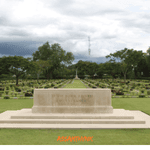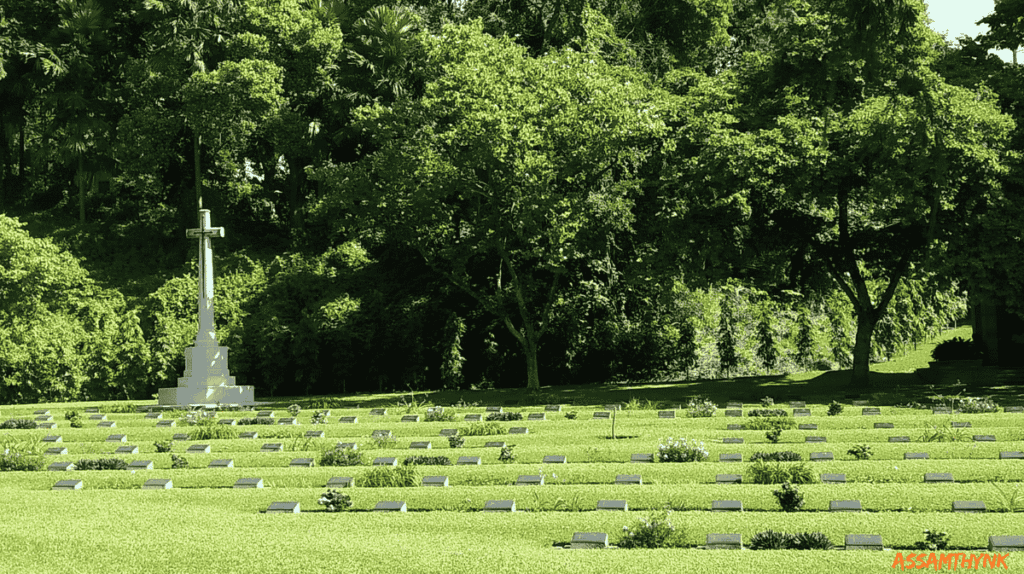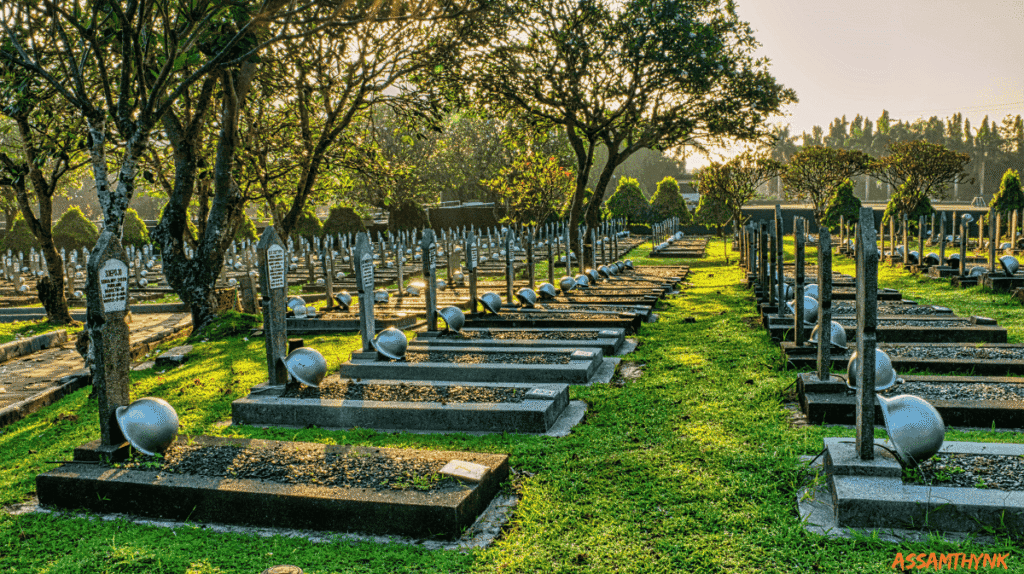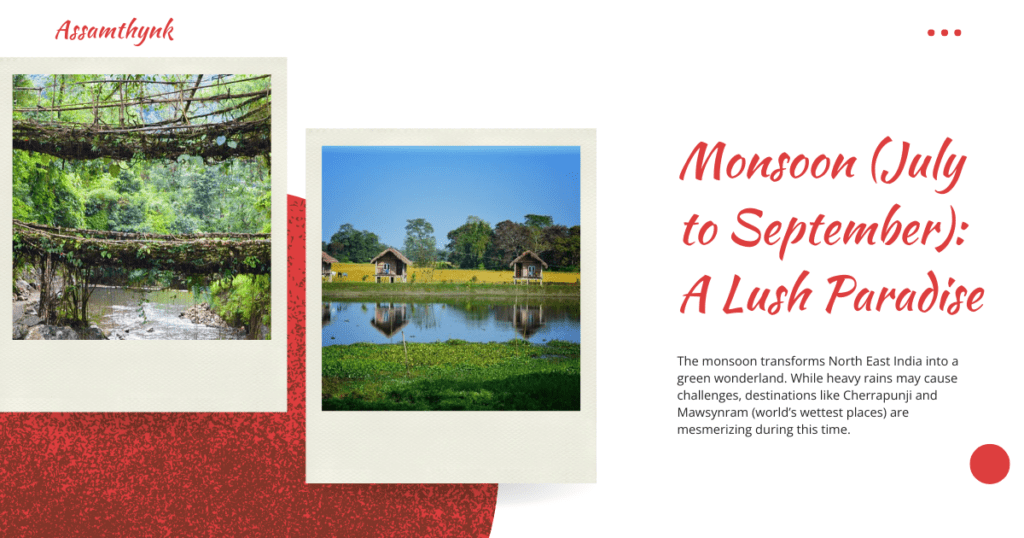Introduction
Imphal, the capital of Manipur, is not only famous for its natural beauty and vibrant culture but also for its rich historical significance. Among its most notable landmarks is the Imphal War Cemetery, a serene memorial dedicated to the brave soldiers who lost their lives during World War II.
Maintained with great care, the cemetery is a place of remembrance and peace, offering visitors a chance to reflect on the sacrifices of the past while enjoying the calm surroundings. For tourists, history enthusiasts, and students of military history, the Imphal War Cemetery is a must-visit destination.
History of Imphal War Cemetery
The cemetery was established in the aftermath of World War II, specifically during the famous Battle of Imphal (1944). This battle was a decisive moment in the Burma Campaign, where Allied Forces fought fiercely against the Japanese Army.
Many soldiers from Britain, India, Canada, Australia, and other Commonwealth nations laid down their lives on the soil of Manipur. To honor their courage, the Commonwealth War Graves Commission (CWGC) built the cemetery.
Today, it houses the graves of more than 1,600 soldiers, each marked with simple headstones inscribed with their names and regiments.
Architecture and Layout
The cemetery is designed with simplicity and dignity. Visitors are welcomed by beautifully maintained lawns, stone memorials, and rows of graves neatly arranged in symmetry. The greenery surrounding the area adds to its calm atmosphere, making it both a historical and spiritual space.
The main features include:
- Stone memorials inscribed with names of the fallen soldiers.
- Manicured gardens that provide a peaceful environment.
- Cross of Sacrifice, a tall stone cross honoring those who served.
Location and Accessibility
- Address: Imphal, Manipur, India
- The cemetery is located close to the city center, making it easily accessible by road.
- Local transport, taxis, and auto-rickshaws are available to reach the site.
- Distance from Imphal Airport: Approximately 10 kilometers.
How to Reach Imphal War Cemetery
Reaching the Imphal War Cemetery is simple as it is located within Imphal city. The nearest airport is Imphal Tulihal Airport, just about 10 km away, and taxis or cabs are easily available for a quick ride. For those arriving by bus, the Imphal Inter-State Bus Terminus is only a short distance from the site. Local transportation such as auto-rickshaws and shared taxis are convenient and budget-friendly options for tourists. Since the cemetery is centrally located, visitors can easily combine the trip with nearby attractions while exploring the city.
Best Time to Visit
The best time to visit Imphal War Cemetery is from October to March, when the weather in Manipur is pleasant and comfortable for sightseeing. During these months, the cool breeze and clear skies create a peaceful atmosphere, making walks around the memorial truly enjoyable. Summer can be hot and humid, while the monsoon season (June to September) brings heavy rains that may disrupt travel. Morning and evening hours are especially recommended for photography and quiet reflection. Visiting during winter also allows travelers to explore Imphal’s other attractions alongside this historic World War II memorial.
Nearby Attractions
A visit to the Imphal War Cemetery can be beautifully combined with exploring other popular attractions in and around Imphal. Just a short distance away lies Kangla Fort, a historic site that once served as the ancient capital of Manipur. Its ruins, temples, and moats offer a fascinating glimpse into Manipur’s royal past. Another must-visit spot is Ima Keithel, famously known as the world’s largest women-run market, where travelers can shop for traditional crafts, textiles, and local delicacies.
For those interested in history and culture, the Manipur State Museum provides an excellent collection of artifacts, manuscripts, and exhibits that showcase the state’s rich heritage. If you are willing to take a short drive from Imphal, the stunning Loktak Lake, India’s largest freshwater lake, is a true natural wonder. The unique floating islands called phumdis make it a photographer’s paradise and a peaceful escape from the city.
Exploring these nearby attractions along with the Imphal War Cemetery offers travelers a well-rounded experience, blending history, culture, and nature. Together, they create a meaningful journey that highlights the beauty and heritage of Manipur.
Things to Do at Imphal War Cemetery
A visit to the Imphal War Cemetery is not just about seeing a historic site; it’s about experiencing peace, history, and remembrance in one place. Here are some meaningful things you can do during your visit:
Pay Tribute –
Walk among the neat rows of headstones and read the inscriptions that tell stories of courage, sacrifice, and dedication. Each stone is a reminder of the lives lost during World War II.
Photography –
The cemetery’s well-manicured lawns, flowers, and symmetrical layout create beautiful scenes for respectful photography. Capture the serene environment and the Cross of Sacrifice standing tall.
Learn History –
Spend time understanding the Battle of Imphal and the role of Allied Forces. The cemetery is an open-air classroom that connects you directly with the past.
Peaceful Walks –
Take a quiet stroll through the gardens, reflect on history, and enjoy the calmness that surrounds this solemn memorial.
Tourism Experience in Imphal
A trip to Imphal War Cemetery offers more than just a glimpse of history—it adds depth to the entire tourism experience in Manipur’s capital. Visiting the cemetery gives travelers a chance to reflect on the sacrifices of World War II, while also connecting them with the cultural heritage of the region. The peaceful surroundings of the cemetery blend beautifully with the vibrant life of Imphal city, creating a balance of remembrance and exploration. Tourists often combine their visit with nearby attractions such as traditional markets, historical monuments, and scenic landscapes, making the journey more enriching. For history lovers, students, and peace seekers, the cemetery acts as a gateway to understanding Manipur’s crucial role in global history. Walking through its serene gardens and then exploring Imphal’s cultural landmarks together creates a truly memorable and meaningful travel experience.
Tips for Tourists
Maintain Silence and Respect:
The Imphal War Cemetery is a place of remembrance for brave soldiers, so visitors should always keep their voices low and maintain a calm environment.
Respectful Photography:
You may take photographs of the serene landscape and memorials, but always do it with dignity and without disturbing others.
Carry Water and Snacks:
Keep yourself hydrated during the visit, but avoid littering inside to preserve the beauty of the grounds.
Comfortable Footwear:
Walking is required across the well-maintained lawns, so wear shoes that allow easy movement.
Cultural and Emotional Impact
The Imphal War Cemetery holds profound cultural and emotional significance, making it more than just a historical landmark. For many families, it is a sacred place where their ancestors are remembered with honor. Walking through the rows of gravestones, visitors often experience a deep sense of humility, respect, and gratitude for the sacrifices made. The calm and serene atmosphere encourages reflection, while the memorial itself conveys a timeless message of peace, sacrifice, and unity that transcends borders. This emotional connection makes the cemetery a powerful reminder of shared human values and collective history.
Why Visit the Imphal War Cemetery?
The Imphal War Cemetery is not just a tourist attraction but a place of deep emotional and cultural significance. It honors the memory of brave soldiers who sacrificed their lives during the Battle of Imphal in World War II. Walking through its serene gardens, visitors experience a sense of peace, reflection, and respect for history. Unlike other monuments, this cemetery carries a universal message of unity, sacrifice, and hope for a better future. Visiting it allows travelers to connect with Manipur’s global historical role while embracing a meaningful and moving travel experience.
Conclusion
The Imphal War Cemetery is more than just a historical site—it is a living testimony to the bravery and sacrifice of soldiers who fought during World War II. For travelers, it offers a rare opportunity to connect with history while experiencing the tranquility of Manipur.
A visit to this sacred memorial not only enriches knowledge but also inspires peace and respect for humanity. Whether you are a tourist, a history lover, or a curious traveler, Imphal War Cemetery is a destination that will leave a lasting impression.
Q2. Why is Imphal War Cemetery famous?
It is famous as the resting place of over 1,600 Allied soldiers who died in the 1944 Battle of Imphal during World War II.
Q3. What are the visiting hours of Imphal War Cemetery?
The cemetery is open daily from morning to evening, and entry is free for all visitors.
Q4. What is the best time to visit Imphal War Cemetery?
The best time to visit is between October and March when the weather is pleasant in Imphal.
Q5. Is photography allowed at Imphal War Cemetery?
Yes, photography is allowed, but visitors are advised to maintain silence and respect the sanctity of the memorial.







Hello my friend! I wish to say that this post is awesome, nice written and include almost all significant infos. I’d like to see more posts like this.